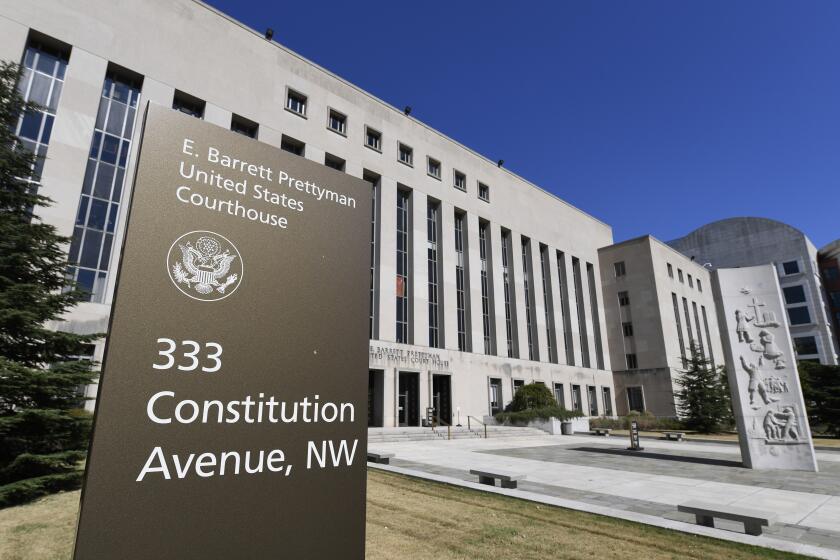Congress Weighs Ban on Home Pesticide Chlordane
- Share via
WASHINGTON — Members of Congress, alarmed by reports that an anti-termite pesticide used in American homes may cause cancer and a multitude of other health problems, Wednesday launched hearings on a bill to immediately ban the chemical.
Chlordane, a pesticide that was banned from agricultural use by the Environmental Protection Agency in 1974 but not from homes, would be classified as a highly toxic air pollutant under legislation before the House subcommittee on Health and the Environment.
EPA officials told the panel they will decide next month whether to toughen controls over the chemical and urged the lawmakers to withdraw their bill. But sponsors, including Rep. Henry A. Waxman (D-Los Angeles), said it might be two to four years before such agency guidelines would take effect.
Linked to Several Disorders
“People are getting sick from this chemical,” he said, noting that chlordane has also been linked to neurological disorders, spontaneous abortions, skin rashes, nausea, depression, loss of memory, fatigue and chronic headaches. “I’m afraid we can’t just sit around and wait for EPA to decide what to do.”
But during a frequently contentious hearing Wednesday, manufacturers of chlordane contended there is no solid evidence linking the pesticide to human ailments and said the product is safe if applied in proper amounts by experienced contractors.
For nearly 40 years, chlordane has been the nation’s most popular termite killer. The chemical, which is applied to nearly 1.5 million homes each year, is typically injected into the soil or through foundations or placed in dirt-covered trenches around a house.
Humans are exposed to the pesticide when its chemical residues vaporize and seep into a building through the foundations or air conditioning ducts. EPA officials said they have allowed chlordane to be used in homes because they believed people would not be harmed by what were thought to be low levels of contamination.
Now, new data indicates the pesticide may be responsible for as many as 300,000 cases of cancer over the next 70 years. A recent EPA study suggested that three out of every 1,000 Americans exposed to chlordane in their homes may develop cancer. The chemical has been linked to liver tumors in animals, and scientists report finding chlordane-related compounds in the breast milk of 74% of the American women tested in a recent survey.
Banned in Three States
These findings have prompted New York, Massachusetts and Minnesota to ban chlordane, and other states are considering similar action.
Charles Frommer, vice president of Velsicol Chemical Corp., said the bill is “bad legislation that reflects neither good public policy, good science nor good sense . . . I’m certain that many of you have seen reports in the media linking chlordane to human cancer. Well, quite simply, those reports are wrong.”
He was supported by Rep. Tom DeLay (R-Tex.), himself a pest exterminator, who said there is no conclusive evidence of chlordane’s causing cancer in humans. “Sure, there are some bad cases out there,” he said, noting that EPA has reported 600 cases of people complaining about the harmful effects of chlordane. “But out of 1 million houses treated each year? That’s hardly a major health hazard.”
Several scientists also testified in support of Velsicol, saying that laboratory tests linking chlordane to cancer in mice and other animals do not automatically prove the chemical is harmful to humans. More research is needed before Congress acts on the issue, they said, because the several alternatives to chlordane on the market are not as effective and could cost consumers much more money.
Yet supporters of the anti-chlordane legislation were not impressed.
Dr. Samuel Epstein, a University of Illinois professor of occupational and environmental medicine, said Velsicol could not dismiss the “damning weight of the evidence. . . . This chemical is the most significant carcinogenic exposure for the majority of American people because of its widespread use in homes. It could be responsible for thousands of cancer deaths and its continued use is an outrage.”
More to Read
Get the L.A. Times Politics newsletter
Deeply reported insights into legislation, politics and policy from Sacramento, Washington and beyond. In your inbox twice per week.
You may occasionally receive promotional content from the Los Angeles Times.










